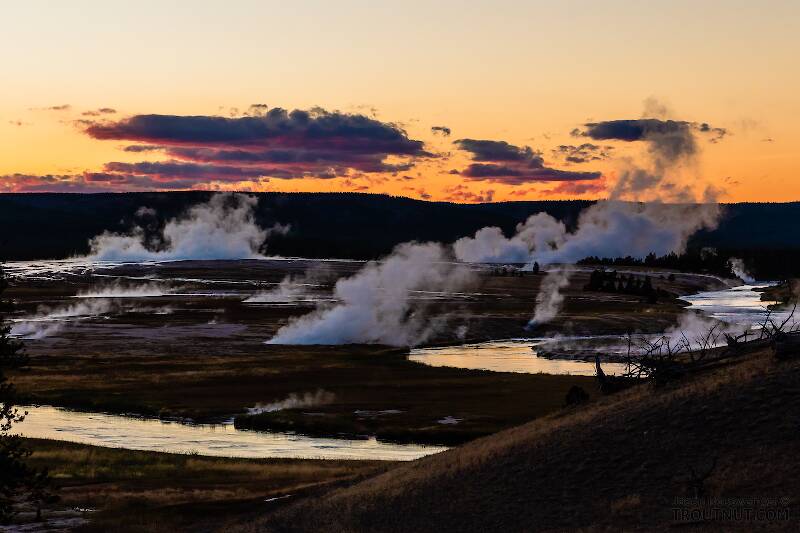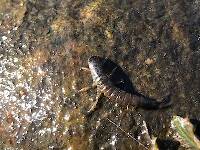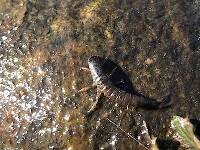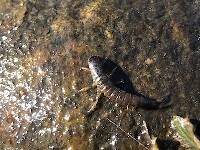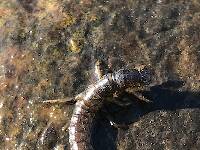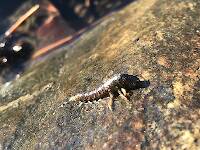
Salmonflies
Pteronarcys californica
The giant Salmonflies of the Western mountains are legendary for their proclivity to elicit consistent dry-fly action and ferocious strikes.
Featured on the forum
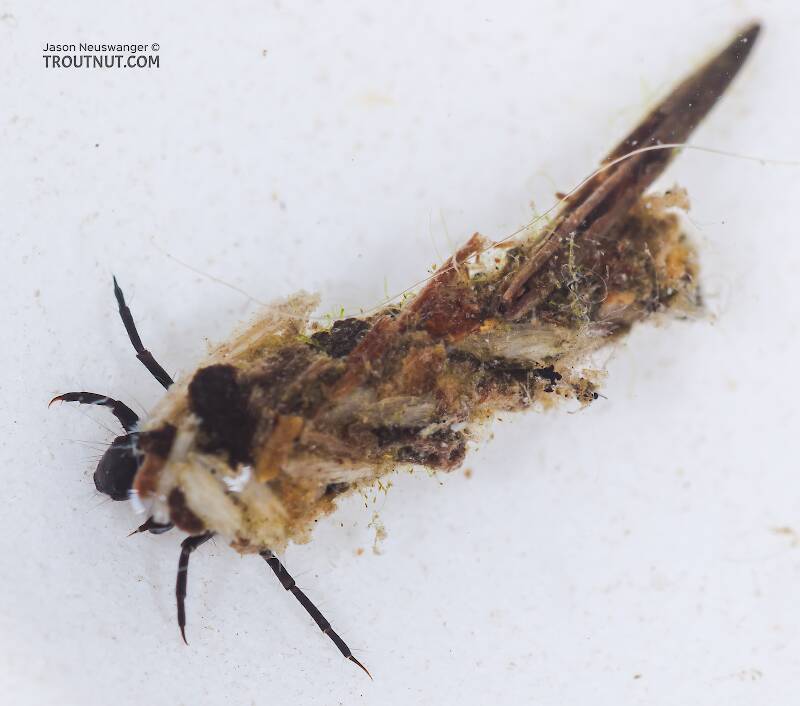
This seems to be a young larva of Limnephilus. Although not clear in the picture, several ventral abdominal segments have chloride epithelia.

Troutnut is a project started in 2003 by salmonid ecologist Jason "Troutnut" Neuswanger to help anglers and
fly tyers unabashedly embrace the entomological side of the sport. Learn more about Troutnut or
support the project for an enhanced experience here.
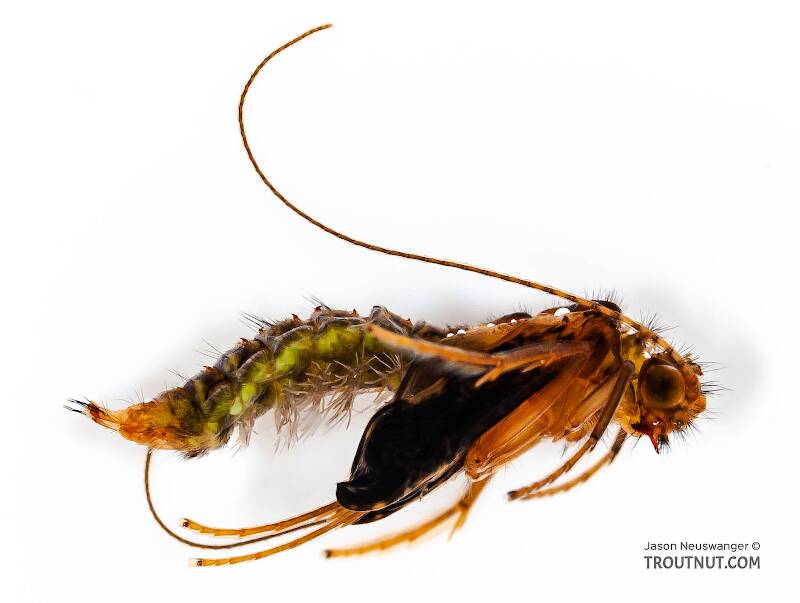
This is the first fully formed caddis pupa (technically, a pharate adult) that I've collected and photographed alive and healthy. I'll put a video of this specimen online soon, too.
GONZO on Apr 23, 2007April 23rd, 2007, 11:11 am EDT
This looks like a hydropsychid to me, but I'd be happy to have comments from the experts.
Earlfishman
Posts: 17
Posts: 17
Earlfishman on Apr 23, 2007April 23rd, 2007, 2:56 pm EDT
With abdominal gills like that, and the hook plates on ab. 3-5 it sure looks like a Hydropsychidae to me as well.
Litobrancha on Apr 24, 2007April 24th, 2007, 1:42 am EDT
probably cheumatopsyche... in hydropsyche/ceratopsyche the hooks at the posterior end of the abdomen are longer on the outside (distal), this one looks longer medially a la cheumatopsyche.
jason did you get this critter to emerge from the pupal shuck?
jason did you get this critter to emerge from the pupal shuck?
GONZO on Apr 24, 2007April 24th, 2007, 4:47 am EDT
Earl--thanks for the confirmation.
Lito--I suspected that this might be Cheumatopsyche, but I had no key. Thanks for the information about one of the distinguishing characters. Size, emergence timing, and wing/body colors were the things that made me lean toward Cheumatopsyche.
Lito--I suspected that this might be Cheumatopsyche, but I had no key. Thanks for the information about one of the distinguishing characters. Size, emergence timing, and wing/body colors were the things that made me lean toward Cheumatopsyche.
Troutnut on Apr 24, 2007April 24th, 2007, 5:16 am EDT
I tried to let it emerge, but no luck.
Jason Neuswanger, Ph.D.
Troutnut and salmonid ecologist
Troutnut and salmonid ecologist
Earlfishman
Posts: 17
Posts: 17
Earlfishman on Apr 24, 2007April 24th, 2007, 2:42 pm EDT
Lito,
Out of curiosity, do you have a reference for a key that takes Trichop pupae past family? That would be a handy thing to have access to.
Earl
Out of curiosity, do you have a reference for a key that takes Trichop pupae past family? That would be a handy thing to have access to.
Earl
Creno on Dec 22, 2007December 22nd, 2007, 11:25 am EST
Earfishman - there is some information available for separating pupae to genus. Info for the hydropsychids is in Ross 1944.
Quick Reply
Related Discussions
Topic
Replies
Last Reply
3
Oct 3, 2008
by GONZO
by GONZO
0
Sep 23, 2006
by Litobrancha
by Litobrancha
2
Sep 23, 2006
by Troutnut
by Troutnut

